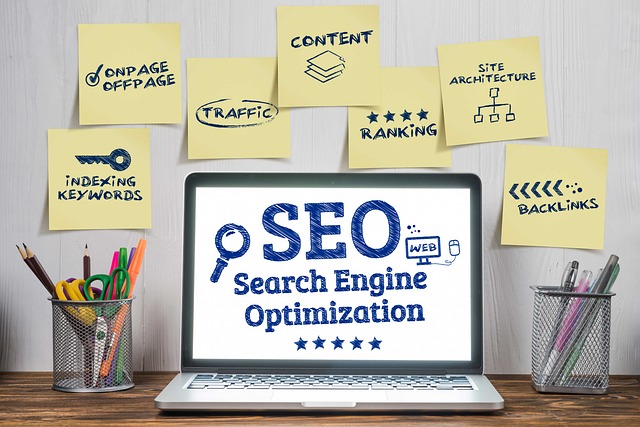
Having a well-optimized website is crucial for businesses to gain visibility and attract organic traffic in today’s digital landscape. The most important technique to optimize your content and website is on-page SEO.
This article will discuss various approaches to mastering on-page SEO and increasing your website’s visibility on search engines, allowing you to improve your website’s search engine rankings and attract more targeted traffic.
Introduction to On-Page SEO
On-page SEO involves optimizing keywords, meta tags, headings, content, and media directly on your website to enhance its visibility on search engine result pages (SERPs). The goal is to make your website more search engine-friendly and improve its ranking.
Keyword Research and Optimization
Thorough keyword research is crucial before beginning on-page SEO optimization. It is important to identify relevant keywords and key phrases that your target audience is likely to search for. Once you have a list of keywords, strategically incorporate them into the content, headings, and meta tags of your website. It is essential to maintain a natural flow and avoid keyword stuffing.
Title Tags and Meta Descriptions
In the process of on-page SEO optimization, title tags and meta descriptions have a significant role. The title tag, appearing as a clickable headline on the SERPs, and the meta description, which provides a comprehensive summary of the webpage’s content, both hold importance. Ensuring uniqueness for each page on your website, it is essential to have title tags and meta descriptions that precisely depict the page’s content and incorporate pertinent keywords.
URL Structure and Permalinks
In order to optimize your URLs for search engines and users, it is crucial to have a clean and concise URL structure. This can be achieved by including relevant keywords and ensuring that the URLs are short and descriptive. Moreover, it is advisable to use hyphens to separate words and refrain from using numbers or special characters in permalinks.
Header Tags and Content Structure
To ensure search engines comprehend the structure and hierarchy of your content, it is important to correctly employ header tags such as H1, H2, H3, etc. Utilize H1 tags for your main page title and incorporate H2, H3, and subsequent tags for subheadings and sections. Arrange your content into coherent paragraphs and consider using bullet points or numbered lists to improve readability.
Optimizing Images and Alt Text
Images can greatly improve the visual attractiveness of your website. However, it is important to optimize them for search engines. This can be done by compressing the images to make the files smaller and increase the loading speed of the pages. Additionally, assigning descriptive file names and incorporating relevant keywords in the alt text can assist search engines in comprehending the image’s content.
Internal and External Linking
Adding internal and external links to your content can enhance the on-page SEO of your website. Internal links aid in creating a hierarchical structure and enable search engines to effectively navigate and index your site. External links to authoritative and relevant sources add credibility to your content. Ensure that the anchor text you use precisely describes the content of the linked page.
Mobile Responsiveness and Page Speed
Ensure that your website is mobile-friendly and offers a smooth user experience on various devices since mobile responsiveness plays a vital role in search engine rankings. In addition, enhance your page loading speed by reducing file sizes, utilizing browser caching, and making use of content delivery networks (CDNs).
Key Elements Of On-Page SEO
On-page optimization in any SEO strategy will focus on specific aspects that are most effective in attaining the unique objectives of a particular campaign. The choice of these aspects largely relies on the campaign’s extent, size, and the client’s attributes. Therefore, there are different ways to categorize and structure on-page SEO, but the following are five fundamental components.
Please rephrase the following text while keeping the same meaning, without adding or removing any information. “Content is key when it comes to creating engaging and valuable online material. It is essential to produce high-quality content that is relevant to your target audience. By understanding their needs and interests, you can tailor your content to meet their expectations and provide them with valuable information. This will help you build trust and credibility with your audience, ultimately driving more traffic to your website and increasing your online visibility.” “Creating engaging and valuable online material requires a focus on content. It is crucial to generate excellent content that is specifically tailored to your target audience. By comprehending their requirements and preferences, you can customize your content to meet their expectations and offer them valuable information. This will aid in establishing trust and credibility with your audience, ultimately resulting in increased website traffic and greater online visibility.”
To create high-quality page content for a website, one must consider multiple factors. The first and most important step is to develop a checklist that will serve as a guide throughout the process. Although the specifics of each checklist may differ, they should always address essential concepts with careful consideration.
The goal is to offer content that is precise and provides useful information.
When thinking step by step, take into account your audience and the path they will follow.
• Integrate keywords strategically, considering each step carefully.
Incorporate visual elements (such as video and images) smoothly into the written content.
Please rephrase the text below while maintaining the same meaning. Do not add new information and do not remove any information. Focus on thinking step by step and using keywords. Original text: “Thinking in a logical and structured manner, rephrase the given text without adding or removing any information. Make sure to maintain the same meaning and focus on using keywords and thinking step by step.” Rephrased text: “In order to rephrase the given text without adding or removing information, it is important to think in a logical and structured way. The main focus should be on using keywords and following a step-by-step approach, while ensuring that the meaning of the original text is maintained.”
The search engine algorithm uses keywords to identify the content of a web page. These keywords communicate the purpose of your website and initiate the process of determining its worth.
When a user performs a search, they expect to receive results that are relevant to their query. To achieve this, it is important to use keywords strategically within a website’s content. These keywords help the algorithm understand what information is being provided. Keywords can be classified into two categories: short and long tail. Short keywords have a wider scope, whereas long-tail keywords are used to target a more specific audience.
HTML elements are the basic building blocks of a website.
When creating content for the website, a large part of on-page SEO involves incorporating certain HTML coding choices. Professional SEO agencies find these adjustments to be beneficial, although they are not complicated.
A website’s page titles are important, not only for search optimization, but mainly because they convey to visitors what they can anticipate to discover on the site.
Headers play a vital role in conveying the content’s purpose to search engine algorithms, similar to page titles. They arrange the content in a user-friendly manner, improving the overall user experience with better quality.
One of the most important elements seen by the visitor are the short page descriptions called meta descriptions or snippets, which appear underneath each title on an inquiry’s SERP when the results are displayed.
Analyzing the text, the following rephrasing can be made without adding or removing any information: Performance of the site.
Investing time and resources into optimizing a website, such as quality content and value-based links, would not be worthwhile if the website does not perform well on all devices.
The evaluation process of the search engine algorithm gives significant importance to the performance of a website. When a website is slow and inefficient, it provides a negative user experience, causing the visitor to leave and look for better, faster alternatives. Present-day internet users have a clear understanding of the advancements made in technology and anticipate a webpage experience that meets those expectations. Research has demonstrated that users have very limited tolerance: if a page takes more than three seconds to load, the majority of users will abandon the website completely.
Advanced Steps
Website owners have access to numerous advanced elements, which consist of integrating image alt-text and optimizing site architecture being two common examples.
Image alt-text: Now is the time for the world to become acquainted with the concept of image alt-text. This tool takes advantage of the growing popularity of image searches. It is highly probable that a substantial portion of website traffic can stem from results obtained through image-based searches.
For this to happen, alt-text must be used. Alt-text is similar to SEO for images. It is always advisable to manually apply alt-text for small websites. However, for larger websites with numerous pages and images, using automated tools to assist in this process will be more efficient in terms of time and resources.
In order for a website to be effectively optimized, it should have a streamlined organizational structure with proper inter-links that can be easily navigated by search engine algorithm crawlers. The navigation path on the website must be clear and straightforward.
Achieving a specific goal is the main objective of quality search engine optimization, which is to increase website traffic. The effectiveness of on-page SEO relies heavily on understanding the website’s audience and their search preferences, in order to meet their needs. To obtain satisfactory SEO results, it is necessary to consistently review, adapt, and enhance the quality of content and user experience.




